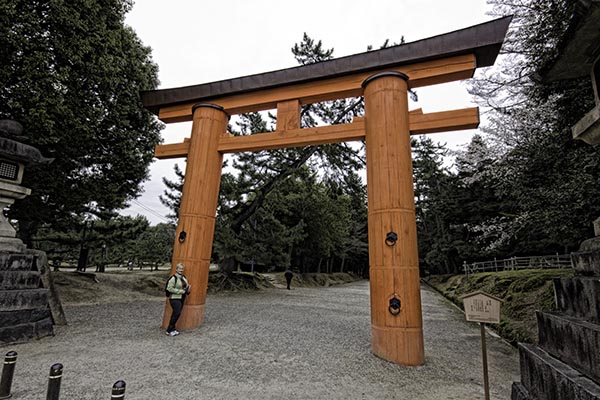
In the serene landscapes of Japan, where ancient traditions intertwine with the rhythms of nature, Shinto shrines stand as sacred sanctuaries. These hallowed spaces draw visitors into a world where the whispers of the Kami, the spirits that inhabit the natural world, echo through the tranquil surroundings. Each shrine, with its distinct architecture and unique offerings, serves as a reflection of the deep reverence the Japanese people have for the spiritual essence that resides in the environment around them.
Shinto shrines are more than mere structures; they are vibrant representations of a spiritual belief system that celebrates the connections between humanity, nature, and the divine. From the iconic torii gates that mark the entrance to these sacred grounds, to the carefully tended gardens that foster meditative reflection, every element invites contemplation and reverence. As we explore the sacred serenity of these shrines, we find not only a journey through Japan’s rich cultural heritage but also an invitation to experience the profound tranquility that comes from engaging with the whispers of the Kami.
The Essence of Shinto Beliefs
Shinto is fundamentally intertwined with the natural world, emphasizing a profound respect for the kami, which are revered spirits or deities found in natural elements such as trees, rivers, mountains, and animals. This belief system fosters a deep connection between humans and nature, highlighting the importance of harmony and balance. Shinto shrines serve as sacred spaces where these spirits are honored, reflecting the inherent beauty of the natural environment that surrounds them.
Another key aspect of Shinto belief is the idea of purity and cleanliness. Ritual practices, known as misogi, involve purification rites that cleanse both the body and spirit before approaching the kami. This focus on purity is not only physical but also extends to the purity of intentions and actions, promoting a life lived in alignment with nature and community. Visitors to shinto shrines often participate in these rituals, symbolizing their respect and their desire to be in tune with the divine.
Community plays a vital role in Shinto practices, with many rituals and festivals being held to celebrate and honor the kami. These events foster social bonds among community members and create a sense of belonging and shared purpose. Shinto shrines often act as the focal points for these gatherings, reinforcing the cultural identity and spiritual connection among the people. Through these communal practices, the essence of Shinto beliefs is celebrated and passed down through generations, ensuring that the whispers of the kami remain alive in the hearts of the faithful.
Architectural Elements of Shrines
Shinto shrines are characterized by their unique architectural elements that reflect a deep connection to nature and spirituality. One of the most recognizable features is the torii gate, which serves as a symbolic entrance to the sacred space. This wooden or stone structure marks the transition from the mundane to the divine, inviting visitors to engage in a meditative journey. The simplicity and elegance of the torii often evoke a sense of calm, drawing attention to the spiritual significance of the shrine.
Compare Options
Another important architectural feature of Shinto shrines is the honden, the main hall where the kami, or deities, are enshrined. The design of the honden can vary widely, but it typically showcases natural materials such as wood and thatch, harmonizing with the surrounding environment. Often elevated on stilts, these structures signify the separation of the sacred from the earthly realm, while also allowing for airflow and protection from the elements. Intricate carvings and ornamental details further enhance their beauty, reflecting the reverence afforded to the kami within.
Surrounding the honden, the honden may be a courtyard or a sacred grove filled with trees and rocks, each element chosen for its spiritual meaning. The use of natural materials and traditional construction techniques emphasizes a respect for the earth, aligning with Shinto beliefs that honor the sacredness of the natural world. These architectural elements not only serve functional purposes but also create an atmosphere of tranquility, inviting serene reflection and connection with the divine.
Rituals and Traditions
At the heart of Shinto shrines lies a rich tapestry of rituals that embody the reverence for kami, or spirits. Visitors often begin their journey with purification rites, which involve washing hands and rinsing mouths at the chozuya, a water basin found at the shrine entrance. This act of purification symbolizes the cleansing of the body and spirit, preparing individuals for the sacredness within. Each step is taken with intention, as practitioners seek to reconnect with the divine and honor their ancestral ties.
Festivals, or matsuri, play a vital role in the life of a shrine, celebrating the kami in vibrant displays of culture and spirituality. These festivities can range from harvest celebrations to seasonal rituals that foster community engagement. During matsuri, participants dress in traditional attire and partake in various activities, including dances, music, and offerings. The atmosphere is filled with joy and gratitude, as the community comes together to express appreciation for the blessings bestowed by the kami.
Another significant tradition is the offering of ema, wooden plaques on which wishes or prayers are written. Visitors to the shrine hang these plaques in designated areas, believing that the kami will grant their desires. This practice not only fosters a personal connection to the divine but also serves as a reminder of the hopes and aspirations held within the community. As a symbol of devotion, ema encourage individuals to reflect on their intentions and the interconnectedness of their lives with the spirits they honor.
The Role of Nature in Shinto
In Shinto, nature is revered as a manifestation of the divine, with shrines often built in harmony with their natural surroundings. This intimate relationship fosters a deep spiritual connection between worshippers and the elements of the earth, such as trees, mountains, rivers, and rocks. Each natural feature is believed to house a kami, a spirit or deity, thereby turning the landscape into a sacred space. The placement of shinto shrines in picturesque settings is intentional, inviting visitors to experience the ethereal beauty of nature as an extension of their spirituality.
The practice of engaging with nature is also evident in traditional rituals and festivals held at shinto shrines. Seasonal changes, such as the blossoming of cherry trees in spring or the vibrant colors of autumn leaves, are celebrated through various ceremonies. These events emphasize the cyclical rhythm of life and the interconnectedness of human beings with the world around them. Participants often express their gratitude to the kami for the blessings of nature, recognizing its vital role in sustaining their lives and well-being.
Furthermore, the serene ambiance of shinto shrines encourages reflection and contemplation. The sound of rustling leaves, flowing water, and birdsong serves as a backdrop for prayer and meditation. Visitors find solace in the calming presence of nature, allowing them to connect more deeply with their spirituality. As such, the natural environment surrounding shinto shrines not only enhances the aesthetic appeal but also enriches the spiritual experience of those who seek to understand the whispers of the kami within the serene embrace of nature.
















